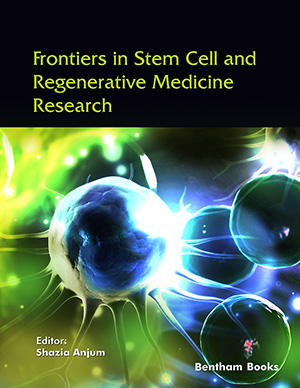
Abstract
The introduction of an experimental animal model for myocardial infarction (MI) has particular importance. Research done on large animals provides valuable information for the researchers because of the similar characteristics of their hearts compared to humans, but the cost of purchasing and maintaining them is high. In comparison, using small animals has advantages, such as they are easy to work with and have low purchase and maintenance costs. However, in some of these animals, due to less similarity of the heart to humans, they cannot simulate the natural pathogenesis of human MI. Moreover, there are different methods for the induction of MI in animals; each has its own advantages and disadvantages. However, a method must be chosen to simulate the natural pathogenesis of MI with minimal complication. Currently, attempts are being made for myocardial regeneration after MI using the direct transplantation of stem cells or an engineered scaffold. The scaffold creates a 3D ambiance for the cultured cells. The task of tissue engineering is to optimize the scaffold with appropriate systems for the separation, proliferation, and differentiation of the desired cells until they are capable of promoting the threedimensional and appropriate growth of the tissue. The purpose of tissue engineering in cardiac is the use of scaffolds and cells in the damaged area, followed by the improvement of the heart function through automatic pulsation, communication with the host vessels, and electrical coupling with the myocardium, eventually creating a force to increase the heart function.
Keywords: Animal model, myocardial infarction, tissue engineering, scaffold, stem cells, Cardiovascular disorders.
[http://dx.doi.org/10.1161/CIR.0000000000000152] [PMID: 25520374]
[http://dx.doi.org/10.1016/j.ijcard.2014.04.096] [PMID: 24794549]
[http://dx.doi.org/10.1172/JCI63068] [PMID: 23281411]
[http://dx.doi.org/10.1016/S0140-6736(11)61590-0] [PMID: 22088800]
[http://dx.doi.org/10.1007/978-1-84628-715-2_1]
[http://dx.doi.org/10.4330/wjc.v7.i5.243] [PMID: 26015857]
[http://dx.doi.org/10.1177/096368979800700302] [PMID: 9647433]
[http://dx.doi.org/10.1161/01.CIR.0000036014.90197.FA] [PMID: 12403666]
[http://dx.doi.org/10.1161/RES.0b013e3182582523] [PMID: 22595296]
[http://dx.doi.org/10.1152/physrev.1999.79.1.215] [PMID: 9922372]
[http://dx.doi.org/10.1016/j.ejcts.2005.08.013]
[http://dx.doi.org/10.1172/JCI111023] [PMID: 6135712]
[http://dx.doi.org/10.1161/01.CIR.95.5.1247] [PMID: 9054856]
[http://dx.doi.org/10.1161/CIRCULATIONAHA.106.659730] [PMID: 17389266]
[http://dx.doi.org/10.1016/j.jtcvs.2005.02.024] [PMID: 16153908]
[http://dx.doi.org/10.1093/eurheartj/ehi151] [PMID: 15728646]
[http://dx.doi.org/10.1038/nature13233] [PMID: 24776797]
[http://dx.doi.org/10.1016/j.scr.2014.06.005] [PMID: 25087896]
[http://dx.doi.org/10.1186/1471-213X-11-21] [PMID: 21473762]
[http://dx.doi.org/10.1016/j.pharmthera.2013.10.007] [PMID: 24140081]
[http://dx.doi.org/10.1093/cvr/21.10.737] [PMID: 3440266]
[http://dx.doi.org/10.1016/j.yjmcc.2011.04.016] [PMID: 21586291]
[http://dx.doi.org/10.1016/j.tcm.2003.12.006] [PMID: 15121155]
[http://dx.doi.org/10.1161/01.CIR.0000164234.24957.75] [PMID: 15867176]
[http://dx.doi.org/10.1002/ame2.12010] [PMID: 30891545]
[http://dx.doi.org/10.1016/S0008-6363(98)00110-2] [PMID: 9764190]
[http://dx.doi.org/10.1113/jphysiol.1994.sp020130] [PMID: 8046643]
[http://dx.doi.org/10.1161/01.RES.0000062469.83985.9B] [PMID: 12600875]
[http://dx.doi.org/10.18620/1866-8836-2015-4-1-2-47-57]
[http://dx.doi.org/10.1186/1532-429X-14-87] [PMID: 23270566]
[http://dx.doi.org/10.1152/ajpheart.00346.2003] [PMID: 12816752]
[http://dx.doi.org/10.1161/01.RES.84.5.551] [PMID: 10082477]
[http://dx.doi.org/10.1161/01.CIR.89.4.1648] [PMID: 8149532]
[http://dx.doi.org/10.1016/j.cardfail.2007.05.006] [PMID: 17923362]
[http://dx.doi.org/10.1161/CIRCULATIONAHA.108.842302] [PMID: 19752372]
[http://dx.doi.org/10.1161/CIRCHEARTFAILURE.108.814459] [PMID: 19808348]
[http://dx.doi.org/10.1556/APhysiol.99.2012.4.1] [PMID: 23238539]
[http://dx.doi.org/10.1152/ajpheart.00452.2010] [PMID: 21217059]
[http://dx.doi.org/10.1161/01.CIR.64.4.699] [PMID: 7273370]
[http://dx.doi.org/10.2527/jas.2006-271] [PMID: 17179543]
[PMID: 19149414]
[http://dx.doi.org/10.1152/ajpheart.2001.280.4.H1814] [PMID: 11247796]
[http://dx.doi.org/10.3390/jcdd3040030] [PMID: 29367573]
[http://dx.doi.org/10.1101/gr.123117.111] [PMID: 21862625]
[http://dx.doi.org/10.1161/01.RES.21.2.191] [PMID: 4952709]
[http://dx.doi.org/10.3791/51329]
[http://dx.doi.org/10.3389/fcvm.2019.00117] [PMID: 31475161]
[http://dx.doi.org/10.1186/1749-8090-7-16] [PMID: 22330077]
[http://dx.doi.org/10.1016/j.bbrc.2004.10.149] [PMID: 15555576]
[http://dx.doi.org/10.1016/j.theriogenology.2011.01.026] [PMID: 21463721]
[http://dx.doi.org/10.1084/jem.20051151] [PMID: 16401694]
[PMID: 9124430]
[http://dx.doi.org/10.3181/0612-RM-308] [PMID: 18156310]
[http://dx.doi.org/10.1172/JCI119070] [PMID: 8958214]
[http://dx.doi.org/10.1152/ajpheart.00111.2005] [PMID: 15863462]
[http://dx.doi.org/10.1186/s41231-017-0011-y]
[http://dx.doi.org/10.1155/2015/893051] [PMID: 26504843]
[http://dx.doi.org/10.14814/phy2.12121] [PMID: 25168871]
[http://dx.doi.org/10.1186/s12967-015-0547-4] [PMID: 26047812]
[PMID: 19712573]
[http://dx.doi.org/10.1177/0192623307313010] [PMID: 18349426]
[http://dx.doi.org/10.1177/0192623309357948] [PMID: 20100841]
[http://dx.doi.org/10.1186/s12931-020-01373-5] [PMID: 32393278]
[http://dx.doi.org/10.1172/JCI116734] [PMID: 8376605]
[PMID: 8901770]
[http://dx.doi.org/10.1038/nm0898-929] [PMID: 9701245]
[http://dx.doi.org/10.1016/j.ahj.2011.07.020] [PMID: 21982657]
[http://dx.doi.org/10.1161/CIRCULATIONAHA.107.734103] [PMID: 18285565]
[http://dx.doi.org/10.1016/j.ehj.2003.09.012] [PMID: 14613737]
[http://dx.doi.org/10.1016/j.jacc.2003.09.018] [PMID: 14680728]
[http://dx.doi.org/10.1038/35070587] [PMID: 11287958]
[http://dx.doi.org/10.1093/bmb/ldq005] [PMID: 20200014]
[http://dx.doi.org/10.3727/096368911X627462] [PMID: 22410280]
[http://dx.doi.org/10.1016/j.cellsig.2007.01.004] [PMID: 17289345]
[http://dx.doi.org/10.1161/CIRCRESAHA.111.245969] [PMID: 21885831]
[http://dx.doi.org/10.1161/CIRCRESAHA.114.302854] [PMID: 24449819]
[http://dx.doi.org/10.12659/MSM.892047] [PMID: 25270584]
[http://dx.doi.org/10.1161/CIRCRESAHA.108.176826] [PMID: 19028920]
[http://dx.doi.org/10.1016/j.jacc.2007.07.041] [PMID: 17964040]
[http://dx.doi.org/10.1016/S0022-5223(03)00118-1] [PMID: 12878946]
[http://dx.doi.org/10.1097/00029330-200702020-00009] [PMID: 17374281]
[http://dx.doi.org/10.1155/2012/812693] [PMID: 22577397]
[http://dx.doi.org/10.2302/kjm.54.132] [PMID: 16237275]
[http://dx.doi.org/10.1089/scd.2011.0722] [PMID: 22468918]
[http://dx.doi.org/10.1007/s12015-012-9365-8] [PMID: 22529014]
[http://dx.doi.org/10.1159/000071150] [PMID: 12835573]
[http://dx.doi.org/10.1161/CIRCRESAHA.108.192237] [PMID: 19213953]
[http://dx.doi.org/10.1038/nbt1327] [PMID: 17721512]
[http://dx.doi.org/10.1038/nature11317] [PMID: 22864415]
[http://dx.doi.org/10.1146/annurev-bioeng-071910-124701] [PMID: 21568715]
[http://dx.doi.org/10.33549/physiolres.932644] [PMID: 24564664]
[http://dx.doi.org/10.1016/j.actbio.2011.03.019] [PMID: 21440094]
[http://dx.doi.org/10.3109/21691401.2016.1146731] [PMID: 26923861]
[http://dx.doi.org/10.1002/term.525] [PMID: 22170772]
[http://dx.doi.org/10.1073/pnas.1006442107] [PMID: 20696917]
[http://dx.doi.org/10.1038/nm1684] [PMID: 18193059]
[http://dx.doi.org/10.1007/s12265-011-9304-0] [PMID: 21744185]
[http://dx.doi.org/10.1002/term.481] [PMID: 22081518]
[http://dx.doi.org/10.1038/nnano.2011.160] [PMID: 21946708]
[http://dx.doi.org/10.1038/nmat2316] [PMID: 18978786]
[http://dx.doi.org/10.1016/j.biomaterials.2012.08.069] [PMID: 22985995]
[http://dx.doi.org/10.1089/biores.2012.0285] [PMID: 23514754]
[http://dx.doi.org/10.1038/nm1394] [PMID: 16582915]
[http://dx.doi.org/10.1073/pnas.0908381106] [PMID: 19805339]
 31
31 2
2




























